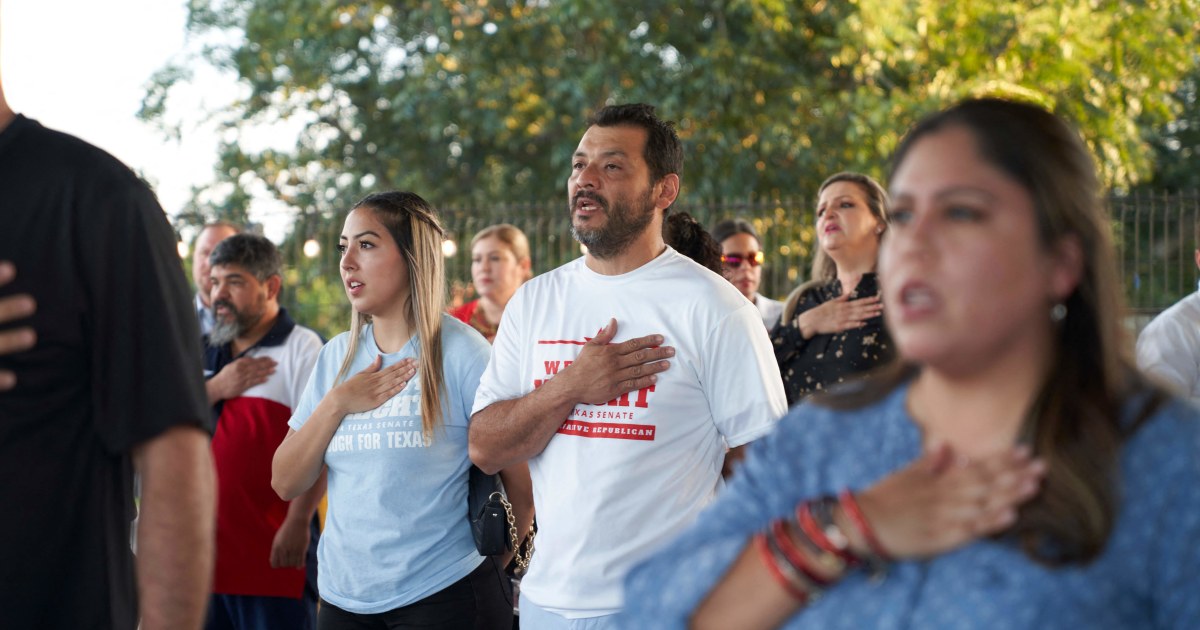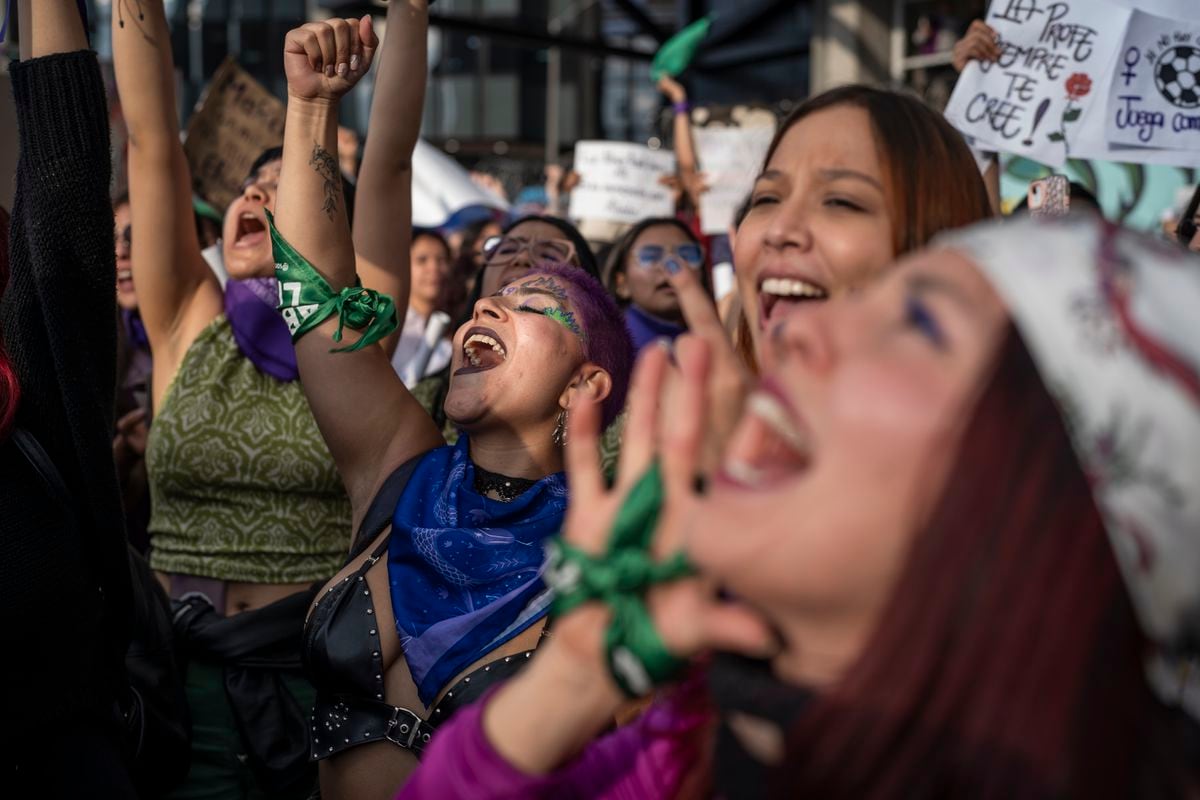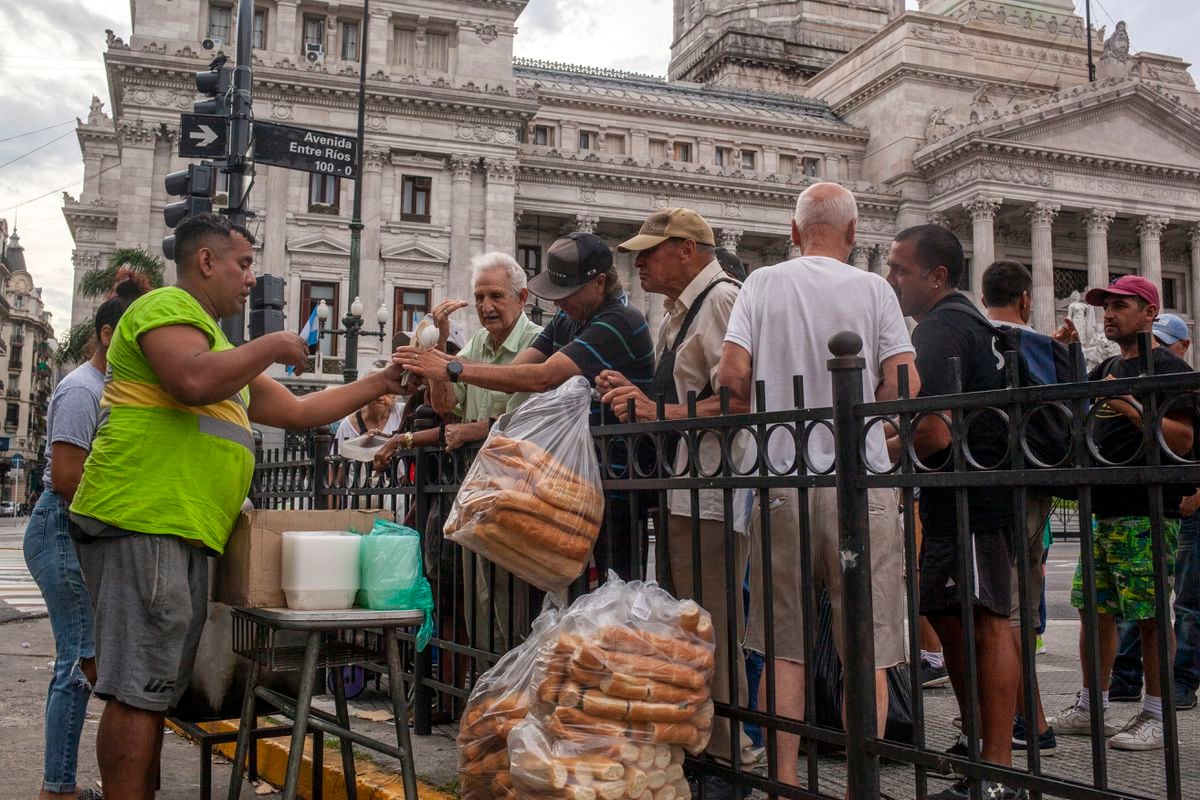At the end of 2017, Mario Vargas Llosa launched the dart during a conference: “Young writers are not interested in politics.
They deal with literature as a field that should not be mixed with politics.
I don't share it.
We had a moral obligation to participate in the political debate.”
The glove was picked up by a wave of authors who both publicly and privately contested, at least in part, the Peruvian Nobel Prize winner.
Perhaps it is true, they said, that the classic role of the intellectual in the partisan card game has diminished, but at the same time they were very clear that his relationship with politics goes beyond the halls of power.
Barely a year after that controversy, a barrage of protests took hold in the streets of half the continent —from Haiti to Chile— pointing out the broken promises of governments.
The campaign for the legalization of abortion in Argentina had just been covered in
The New York Times,
the same medium that had uncorked the Me Too movement shortly before, which was already spreading throughout the region breaking the silence on sexist abuse.
The commemoration last year of the five centuries of the colonization of America added more wood to the fire of the dispute over the stories.
With this hot social panorama and the inertia of the global winds, especially from the US, in favor of recovering voices relegated to the margin of the white, masculine and Western canon, the region has experienced a return of the political in recent years.
At least in comparison with the cultural production of the carefree decade of the nineties and the first steps of the new century, when the current debates hardly left militant circles or the theoretical laboratories of the universities.
Now they have jumped from the classroom to the street, museums, novels and even family chats on WhatsApp.
Debates about collective identities, feminisms, memory of colonization, race, violence or the climate threat.
This is an attempt to map the new coordinates of culture in Latin America.
With a hot social scene and the inertia of the global winds, the region recovers voices relegated to the edge of the white, masculine and western canon
1. The forgotten sounds
After Japanese, Spanish is the fastest language on the planet, the one that pronounces the most syllables per second and possesses one of the largest vocabularies, thanks above all to Latin America.
The Spanish edition of the British magazine
Granta
He wanted to certify last year that richness and exuberance in his list of 25 young narrators under 35 years of age in the language of Cervantes.
The Ecuadorian Mónica Ojeda, the Cuban Carlos Manuel Álvarez or the Costa Rican Carlos Fonseca stand out on the list.
If the profile of young Latin American literature in the selection published the previous decade was urban, cosmopolitan and with an almost obligatory stop in Europe, this time the proposed canon is much more peripheral.
With the focus on the oral register and the sound qualities of the language typical of each of the corners of the region and special attention to idioms and idioms.
A diverse Spanish that explodes in a range of colors in the ear.
The same sensation caused by reggaeton, already definitively installed at the top of the musical planet.
His reign has simmered and the accusations of being simple, vulgar, sexist and violent are becoming less relevant.
The collaboration of Luis Fonsi and Daddy Yankee,
Despacito
, was the song of 2017. At the beginning of this year, Bad Bunny became the most listened to artist in the world on all digital platforms and his latest album was the first in Spanish to be nominated for a Grammy.
Along the way, Medellín has become one of the meccas of the genre, to which the prefixes that anticipate wrinkles are already beginning to hang around their necks.
For example, the post-reggaeton of the Dominican Kelman Duran.
Slower, twistier and thicker.
More thought perhaps to ramble than to perrear.
The validation of reggaeton by the big industry has opened the door to the expansion of other Caribbean genres
—dembow, dance hall,
champeta—, Brazilian —dance funk— or to the recovery of music with a lot of popular appeal but with hardly any
cool
shine until recently, like the cumbia or the Mexican corrido.
It is no longer just that J Balvin shone on the Coachella poster back in 2019, but that exponents of banda music such as Grupo Firme or cumbieros Los Ángeles Azules also walked through that festival.
"Things with designation of origin are succeeding that do not buy the Anglo-Saxon canons, but go to the roots and take it elsewhere," says Camilo Lara, a Mexican producer and performer with a leg also in California.
Members of the Chilean collective Las Tesis, during an act in Guadalajara (Mexico), in March 2022. ULISES RUIZ (AFP via Getty Images)
2. Feminisms
The Brooklyn Museum and the Hammer in Los Angeles had their main rooms packed for more than a year (between 2017 and 2018) with the exhibition
Radical Women: Latin American Art, 1960 – 1985
.
A rescue of 123 authors until then almost invisible.
“The show demonstrated not only that there were many women in Latin American art who had produced consistent work that had been completely forgotten or erased, but also the cultural impoverishment that such obliteration produced,” says one of its curators, Andrea Giunta from Argentina.
"Feminism is the greatest library of recent years."
The rescue has been a constant in all disciplines.
As well as the acceleration of contemporary authors and artists to the first line of international recognition.
A phenomenon that in literature has come to promote academic conferences and journalistic texts with titles such as "The new Latin American boom is written by women."
The analogies work, of course, when putting the most exquisite prizes as a measuring stick.
This same month, the Argentinean Samanta Schweblin won the very prestigious (and American) National Book Award, in the category of translated literature, with
Siete casas vacías .
.
Until now, the few Latin Americans in that club were Octavio Paz, César Vallejo and Julio Cortázar.
The same has happened with the nominations for the Man Booker International, which is awarded in the United Kingdom, for the Mexicans Valeria Luiselli and Fernanda Melchor or Schweblin herself.
Only boom totem poles had gone this far.
The winners multiply, leaping across generations, styles and literary genres: Mariana Enriquez, Fernanda Trías, Nona Fernández, Pilar Quintana, Camila Fabbri.
“Does something unite them, besides being women?” Leila Guerriero wondered (rhetorically) in a recent text, stressing the risks of these commercial labels.
For the editorial director of Penguin Random House in Mexico, Andrés Ramírez, "the revitalizing role of these works written by women has been very important, both politically and literary."
Beyond narrative, essays on feminist reflections have also accompanied this wave, such as
Quemar el miedo
, a kind of political and artistic manifesto by the Chilean collective Las Tesis, authors of the global anthem against male violence.
A rapist in your path
, which became popular during the 2019 protests.
Alejandra Ghersi, a non-binary singer who became known as Arca, in a promotional image.Hart Leshkina
3. Crossing genres
"I can be friendly or I can be fake / I can be real or I can hurt you / Non-binary, darling."
These lyrics by Arca are valid as a declaration of intent both for her music and for herself.
He was born 32 years ago in Venezuela as Alejandro Ghersi and began to transition to Alejandra in 2018. Today he defines himself as non-binary.
Multidisciplinary artist, model,
performer
and, above all, producer —behind names like Björk and Kanye West— and interpreter, her music has progressed in ways that are beyond definition.
Crosses of experimental noise, Martian pop,
trap
, reggaeton or soft ballads.
Latin America is one of the territories with the highest rate of hate crimes against the LGTBI community.
And also where a film about a transgender woman,
A Fantastic Woman,
by Chilean Sebastián Lelio, has won an Oscar.
Or the place of
Las malas,
the publishing phenomenon by Argentine Camila Sosa, also on the list of award-winning authors, which recounts the adventures of a group of transvestites based on Sosa's own experience.
“I am going to destroy it, make it sick, confuse it, make it uncomfortable, I am going to displace it and make it reborn as many times as necessary”, said the author regarding language in a fragment of a novel that plays to erase the borders between the confessional and the fiction, one of the global cultural trends that does not run out of steam.
More chameleon books:
Huaco Retrato,
by Gabriela Wiener,
Empty Set,
by Verónica Gerber.
More films:
Ema
, by Chilean Pablo Larraín, or
Carmín tropical,
of the Mexican Rigoberto Perezcano.
And the flexibility of sounds and alliances of the Argentine producer Bizarrap or the renewal of the Mexican corrido by Natanael Cano at the blow of the so-called urban rhythms.
A combination of face tattoos and ranch hat.
The exhibition 'Histórias afro-atlânticas', which could be seen at the MASP in São Paulo (Brazil) between June and October 2018.MASP
4. The racial wound
"In a continent where a large percentage of the population is Afro-descendant, the dominance of a completely white art was incomprehensible," says curator Andrea Giunta.
The Afro-Atlantic Histories
exhibition ,
at the São Paulo Museum of Art, was quite an event in 2018 and had its replica this year at the National Gallery in Washington.
Brazil is one of the countries with the greatest weight of the black population and continues to be marked by the deep imprint of the trauma of slavery.
The leap from brainy academic essays to best-selling books is paradigmatic.
The commercial success of the chronicle
Escravidao
, by journalist Laurentino Gomes, or the novel
Torto Arado
(
Tortuoso Plow
, by Itamar Vieira Junior, with a Spanish version by Felipe Cammaert) are a sample of the regional turn.
The Colombian writer and cultural promoter Velia Vidal also underscores the recent rescues of cultural classics from Chocó, the racialized and poor area of her country, such as the novel
My Black Christ,
by Teresa Martínez de Varela, or
Las estrellas son negras
, by Arnold Palacios.
She also points to fashion as a new territory for "vindication through elements of the Afro or the indigenous and a clear position against cultural appropriation."
A territory also explored from Mexico by the Government itself, which has launched numerous campaigns to denounce the unauthorized use of textile designs from indigenous communities by large international fashion houses.
Internally, the racial debate has also been fueled in the country with sales successes such as
Racist Mexico: A complaint
, by historian Federico Navarrete, or the Poder Prieto initiative, which seeks to make discrimination in the audiovisual industry visible.
The actor Óscar Jaenada, as Hernán Cortes, in a still from the series 'Hernán', on Amazon Prime Video.
5. Memory
The anniversary of the fifth centenary of the arrival of Hernán Cortes in the heart of Tenochtitlán has been the trigger not only for a copious publication of books, series and films on the subject.
It was also the spring of a controversial controversy in the political arena after the letter sent by the Mexican president, Andrés Manuel López Obrador, to the King of Spain, Felipe VI, demanding an apology for the excesses of the Conquest.
Beyond the noise of the political fray, essays like
When Moctezuma met Cortés
, by Matthew Restall, or
¿Quién conquistador México?,
also by Navarrete, are good touchstones for questioning commonplaces, prejudices, and the narratives built around them. of the historical episode.
The
Hernán
series , from Amazon Prime, also jumped on the bandwagon at the time.
And there came to be another blockbuster underway that did not come to fruition.
The project had Spielberg at the controls accompanied by the Colombian Ciro Guerra, author of the hypnotic
Embrace of the Serpent
, starring two indigenous people and his relationship with a European expedition already in the 20th century.
Other tapes that look back are
Zama
, by the Argentine Lucrecia Martel, or the recent
Argentina, 1985,
which opens the melon to review the trials against military dictators.
An angle similar to the one that Colombia is experiencing with its peace process after half a century of war between the State and the FARC.
Chronicles like
The war we lost,
by Juan Miguel Álvarez, novels or even comics have already begun the task of trying to suture the tear.
Work of the Hannah Arendt Institute of Artivism (INSTAR), led by the Cuban Tania Bruguera, at the last Documenta in Kassel, in June 2022.Nicolas Wefers
6. Dystopia and utopia
Latin American science fiction literature, which for decades was eclipsed by the place occupied by magical realism, has gained a new space in recent years among authors and publishers who until recently were focused on other projects, or who considered science fiction as something minor intended for young people.
The range of subgenres ranges from climatic dystopias —where the latest works by the Mexican Emiliano Monge, the Argentine Martín Caparrós, the Colombian Juan Álvarez or a pioneer such as the Bolivian Edmundo Paz Soldán fit— to gothic horror, led by the Argentine Mariana Enriquez or the Ecuadorians Mónica Ojeda and María Fernanda Ampuero.
Also entering the science fiction drawer is the rise of the so-called Latin American
new weird
, which introduces elements and symbols of pre-Hispanic cultures in its speculative stories.
As in
Havana Underguater,
by the Cuban Erick J. Mota, where the Yoruba deities explore the networks of cyberspace.
Or in the stories of
Our Dead World,
by the Bolivian Liliana Colanzi, in which there are Inca ruins where "some nights spaceships come down."
Faced with the fantasy tool to open the imagination to other possible worlds, the latest developments also delve into a genre with a Latin American brand: the literature of exile.
This is confirmed by the second flight of the Nicaraguans Sergio Ramírez and Gioconda Belli or the forced departures from Cuba as a way to avoid the siege and persecution of the plastic artists Tania Bruguera and Hamlet Lavastida, both exhibited in the last Documenta in Kassel.
At the same time, the coming to power of progressive governments, such as in Chile and Colombia, has led to public support for authors and artists, both young and veteran, in the old style of the committed intellectual that prevailed throughout the 20th century.
You can follow BABELIA on
and
, or sign up here to receive
our weekly newsletter
.
Subscribe to continue reading
Read without limits
Keep reading
I'm already a subscriber







/cloudfront-eu-central-1.images.arcpublishing.com/prisa/GZBJJXO3EZE2HLSP5ZRRKYYYOY.JPG)

